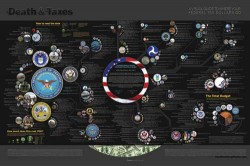Gary Wolf, of Wired and The Quantified Self, describes personal data collection and analysis in NYT magazine. Collect data about yourself, and you just might learn something.
Humans make errors. We make errors of fact and errors of judgment. We have blind spots in our field of vision and gaps in our stream of attention. Sometimes we can’t even answer the simplest questions. Where was I last week at this time? How long have I had this pain in my knee? How much money do I typically spend in a day? These weaknesses put us at a disadvantage. We make decisions with partial information. We are forced to steer by guesswork. We go with our gut.
That is, some of us do. Others use data.
It all sounds great at first. But the story ends, as these types of stories almost always do, with a guy in a Google shirt walking around with one too many gadgets:
Bo Adler, a young computer scientist at Fujitsu Laboratories of America, is one of the most committed self-trackers I’ve ever met: during his most active phase he wore a blood-pressure cuff, pulse oximeter and accelerometer all day long, along with a computer on a harness to collect the data. Adler has sleep apnea, and he is trying to figure it out. When he became too self-conscious going to the gym in his gear, he wore a Google T-shirt to throw people off. Maybe he was a freak, but at least people could mistake him for a millionaire freak.
We data folk stick to our guns though:
“My girlfriend thinks I’m the weird person when I wear all these devices,” Bo Adler says. “She sees me as an oddity, but I say no, soon everybody is going to be doing this, and you won’t even notice.”
So proud. You tell ’em, Bo Adler. You tell ’em.















 Visualize This: The FlowingData Guide to Design, Visualization, and Statistics (2nd Edition)
Visualize This: The FlowingData Guide to Design, Visualization, and Statistics (2nd Edition)










